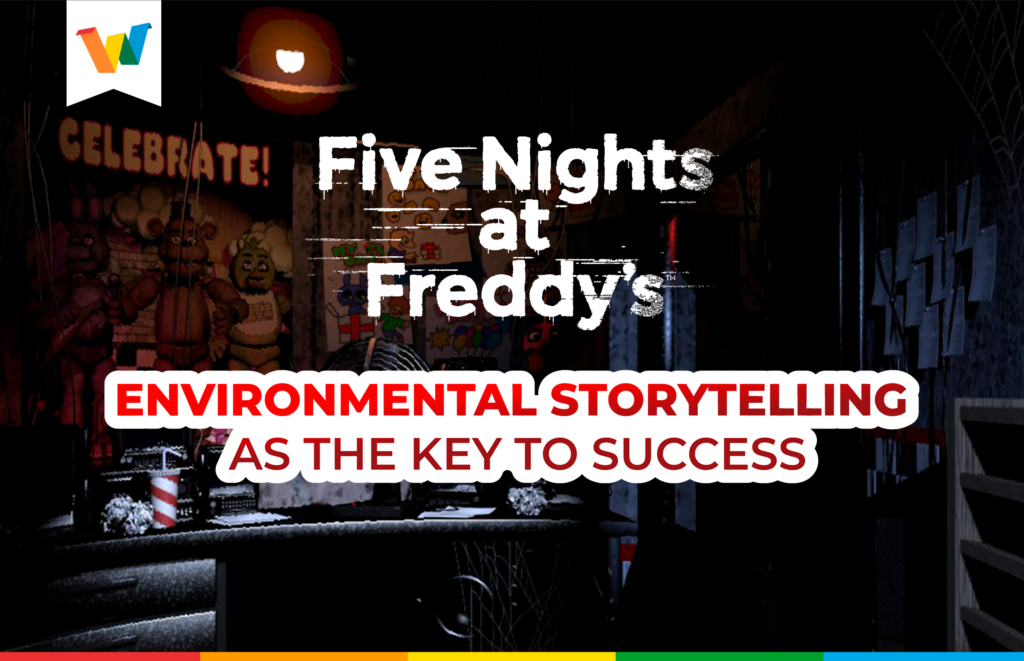“Five Nights at Freddy’s” is a phenomenon in the gaming industry that has captivated millions of players worldwide. In this indie horror game created by Scott Cawthon, players take on the role of a night security guard at a pizzeria. However, they soon realize that the animatronics, the animated characters in the establishment, come to life at night and become deadly threats.
The gameplay itself is quite simple. As the security guard, you must stay in your office, check the security cameras, and press buttons to close doors before the animatronics reach you, all while managing your limited battery power. You must survive until 6 AM for six days (no, it’s not actually five, the title is misleading), avoiding being caught, to win the game. And that’s it – there’s no character interaction, detailed descriptions, or even a glimpse of the security guard you’re embodying. You’re confined to the same setting throughout the entire game, performing repetitive tasks. So, why was this the game that broke the internet upon its release in August 2014?
The answer requires a lengthy explanation that can be boiled down to two words: Environmental Storytelling.
Environmental storytelling is a narrative technique used in various media, such as video games, movies, and theme parks, to tell stories through the environment and the player or viewer’s experience. Unlike traditional storytelling, which primarily focuses on plot and characters, environmental storytelling focuses on conveying information and emotions through space, atmosphere, sound design, and other sensory elements.
In environmental storytelling, the environment becomes an integral part of the story. Carefully designed details, such as architecture, lighting, strategically placed objects, and sound effects, are used to communicate information and evoke emotions in the player or viewer. These elements combine to create an immersive and enriching experience.
In cinema, movies like “Blade Runner” and “Mad Max: Fury Road” have incorporated elements of environmental storytelling in their scenes. The post-apocalyptic settings in these films not only act as stunning visual backdrops but also reveal subtle clues about the history and state of the world in which the plot unfolds. Every object in the scene, every scar on the landscape, has a story to tell. Environmental storytelling also finds its place in visual art, where artists create installations and exhibits that allow viewers to fully immerse themselves in a fictional world. These artworks invite exploration and contemplation, where each element of the environment is carefully designed to evoke emotions and convey a narrative without the need for words.
The strength of environmental storytelling lies in its ability to immerse the audience in a unique and personal experience. Unlike more traditional forms of storytelling, where stories are presented in a linear and explicit manner, environmental storytelling allows the audience to discover and actively participate in the construction of the story. It’s an invitation to explore, observe, and reflect as hidden secrets are unraveled in every corner of the environment.
In video games, it is used to tell stories in a non-linear way and immerse players in a virtual world. Unlike traditional narrative based on dialogue and cutscenes, environmental storytelling focuses on conveying information and emotions through the game environment and the player’s interactions with it.
Players may discover clues, diaries, audio recordings, posters, notes, or visual signals that help them understand the game’s story. These narrative elements can be organically integrated into the environment or may require players to actively investigate and explore to find them.
Furthermore, environmental storytelling in video games can make use of unexpected events and encounters that occur within the game environment. These events can drive the narrative forward and change the player’s perception of the story and characters.
How does Scott Cawthon rely on this resource?
The oppressive, claustrophobic, and sinister environment, accompanied by visual and sound elements, not only contribute to the horror narrative and keep players in a constant state of alertness, but they are key to understanding the basics of the game: something strange is happening in that place. And it makes us ask the corresponding question… Why?
Implicit Storytelling
The narrative of FNAF unfolds implicitly through clues and hidden messages found throughout the game. Players can discover fragments of a larger story by paying attention to details and carefully analyzing environmental elements. These hints give rise to theories and speculation from fans, creating an active and engaged community around the enigmatic game’s plot.
It all starts when, as a random event within the game, the posters on the walls of the pizzeria building turn into newspaper clippings. These report on past incidents, such as disappearances and child murders within the location, as well as safety issues related to the animatronics that led to the closure and subsequent reopening of the establishment. From this point on, the internet has taken on the task of identifying all the secrets hidden within the game’s environment and piecing together the puzzle.
Here are some examples of hidden messages and how they relate to the FNAF story:
- Night 5 messages in FNAF 1: On the fifth night of the first game, players can hear hidden messages by slowing down the voice recordings played in the player’s room. These messages are distorted voices that seem to come from the animatronics. Though the messages are hard to understand, they suggest that the animatronics are possessed by the souls of the children who were murdered in the pizzeria.
- The handprint on Freddy: The design of the game’s most iconic character, Freddy Fazbear, features a disturbing detail that has sparked debate on the internet. What appears to be a child’s handprint marked on the animatronic’s head. While there are no clear answers about the motive, the most popular fan theory suggests that it is the trace left by one of the children who fought to avoid being trapped within the animatronic.
- Easter eggs in the security cameras: While monitoring the security cameras, players may notice the presence of easter eggs or hidden messages in different locations. These easter eggs can include fleeting images of the animatronics, enigmatic symbols, or even disturbing visuals. These hidden messages add an additional element of suspense and mystery as players explore the game’s environment.

These are just a few examples, as the FNAF saga’s narrative extends beyond the games themselves. Scott Cawthon has created a series of sequels, prequels, and spin-offs that expand the universe and add additional layers to the story. These subsequent releases have revealed details about the origin of the animatronics, past events, and the characters involved, fueling even more speculation and theories among players.
Players’ interaction with the game’s narrative goes beyond the screen. Fans have immersed themselves in the search for hidden clues, the interpretation of cryptic messages, and the detailed analysis of the games and their story. Online communities have formed to share theories, discuss clues, and unravel the mysteries surrounding the series. This level of engagement and involvement showcases the lasting impact of FNAF’s environmental storytelling.
It is a standout example of environmental storytelling in the world of video games. Through its careful environmental design, disturbing sounds, and hidden clues, the game immerses players in a terrifying and suspenseful experience. Attention to detail and the construction of an enigmatic story have generated a passionate and dedicated fan base. The environmental storytelling of “Five Nights at Freddy’s” continues to captivate players and keep them on the edge of their seats as they explore the dark secrets lurking within the haunted pizzeria.







